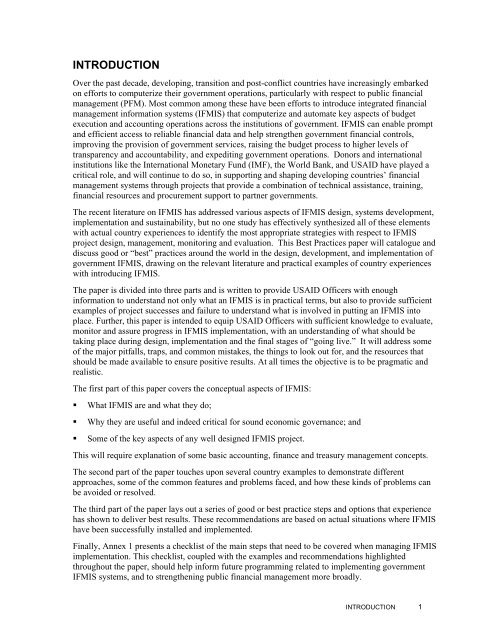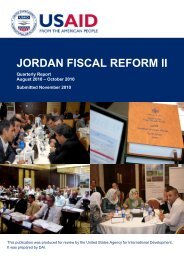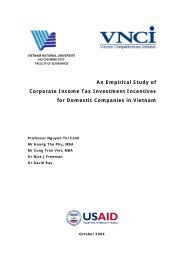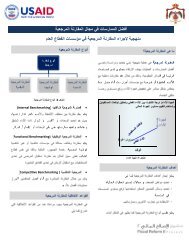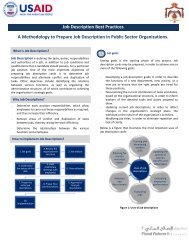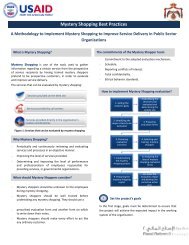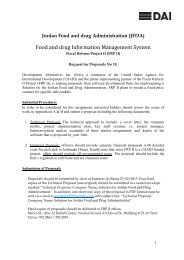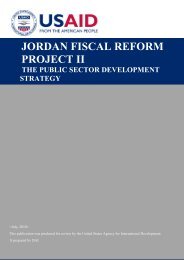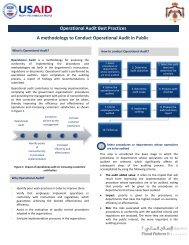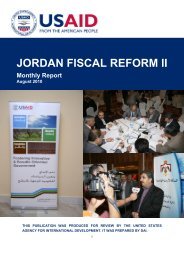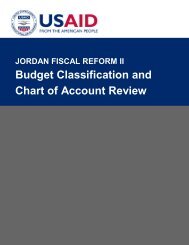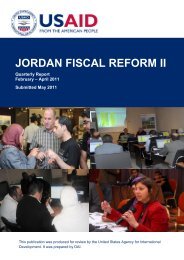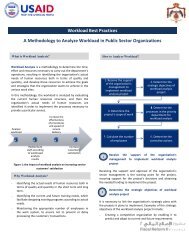Integrated Financial Management Information Systems: A ... - Frp2.org
Integrated Financial Management Information Systems: A ... - Frp2.org
Integrated Financial Management Information Systems: A ... - Frp2.org
Create successful ePaper yourself
Turn your PDF publications into a flip-book with our unique Google optimized e-Paper software.
INTRODUCTION<br />
Over the past decade, developing, transition and post-conflict countries have increasingly embarked<br />
on efforts to computerize their government operations, particularly with respect to public financial<br />
management (PFM). Most common among these have been efforts to introduce integrated financial<br />
management information systems (IFMIS) that computerize and automate key aspects of budget<br />
execution and accounting operations across the institutions of government. IFMIS can enable prompt<br />
and efficient access to reliable financial data and help strengthen government financial controls,<br />
improving the provision of government services, raising the budget process to higher levels of<br />
transparency and accountability, and expediting government operations. Donors and international<br />
institutions like the International Monetary Fund (IMF), the World Bank, and USAID have played a<br />
critical role, and will continue to do so, in supporting and shaping developing countries’ financial<br />
management systems through projects that provide a combination of technical assistance, training,<br />
financial resources and procurement support to partner governments.<br />
The recent literature on IFMIS has addressed various aspects of IFMIS design, systems development,<br />
implementation and sustainability, but no one study has effectively synthesized all of these elements<br />
with actual country experiences to identify the most appropriate strategies with respect to IFMIS<br />
project design, management, monitoring and evaluation. This Best Practices paper will catalogue and<br />
discuss good or “best” practices around the world in the design, development, and implementation of<br />
government IFMIS, drawing on the relevant literature and practical examples of country experiences<br />
with introducing IFMIS.<br />
The paper is divided into three parts and is written to provide USAID Officers with enough<br />
information to understand not only what an IFMIS is in practical terms, but also to provide sufficient<br />
examples of project successes and failure to understand what is involved in putting an IFMIS into<br />
place. Further, this paper is intended to equip USAID Officers with sufficient knowledge to evaluate,<br />
monitor and assure progress in IFMIS implementation, with an understanding of what should be<br />
taking place during design, implementation and the final stages of “going live.” It will address some<br />
of the major pitfalls, traps, and common mistakes, the things to look out for, and the resources that<br />
should be made available to ensure positive results. At all times the objective is to be pragmatic and<br />
realistic.<br />
The first part of this paper covers the conceptual aspects of IFMIS:<br />
What IFMIS are and what they do;<br />
Why they are useful and indeed critical for sound economic governance; and<br />
Some of the key aspects of any well designed IFMIS project.<br />
This will require explanation of some basic accounting, finance and treasury management concepts.<br />
The second part of the paper touches upon several country examples to demonstrate different<br />
approaches, some of the common features and problems faced, and how these kinds of problems can<br />
be avoided or resolved.<br />
The third part of the paper lays out a series of good or best practice steps and options that experience<br />
has shown to deliver best results. These recommendations are based on actual situations where IFMIS<br />
have been successfully installed and implemented.<br />
Finally, Annex 1 presents a checklist of the main steps that need to be covered when managing IFMIS<br />
implementation. This checklist, coupled with the examples and recommendations highlighted<br />
throughout the paper, should help inform future programming related to implementing government<br />
IFMIS systems, and to strengthening public financial management more broadly.<br />
INTRODUCTION 1


